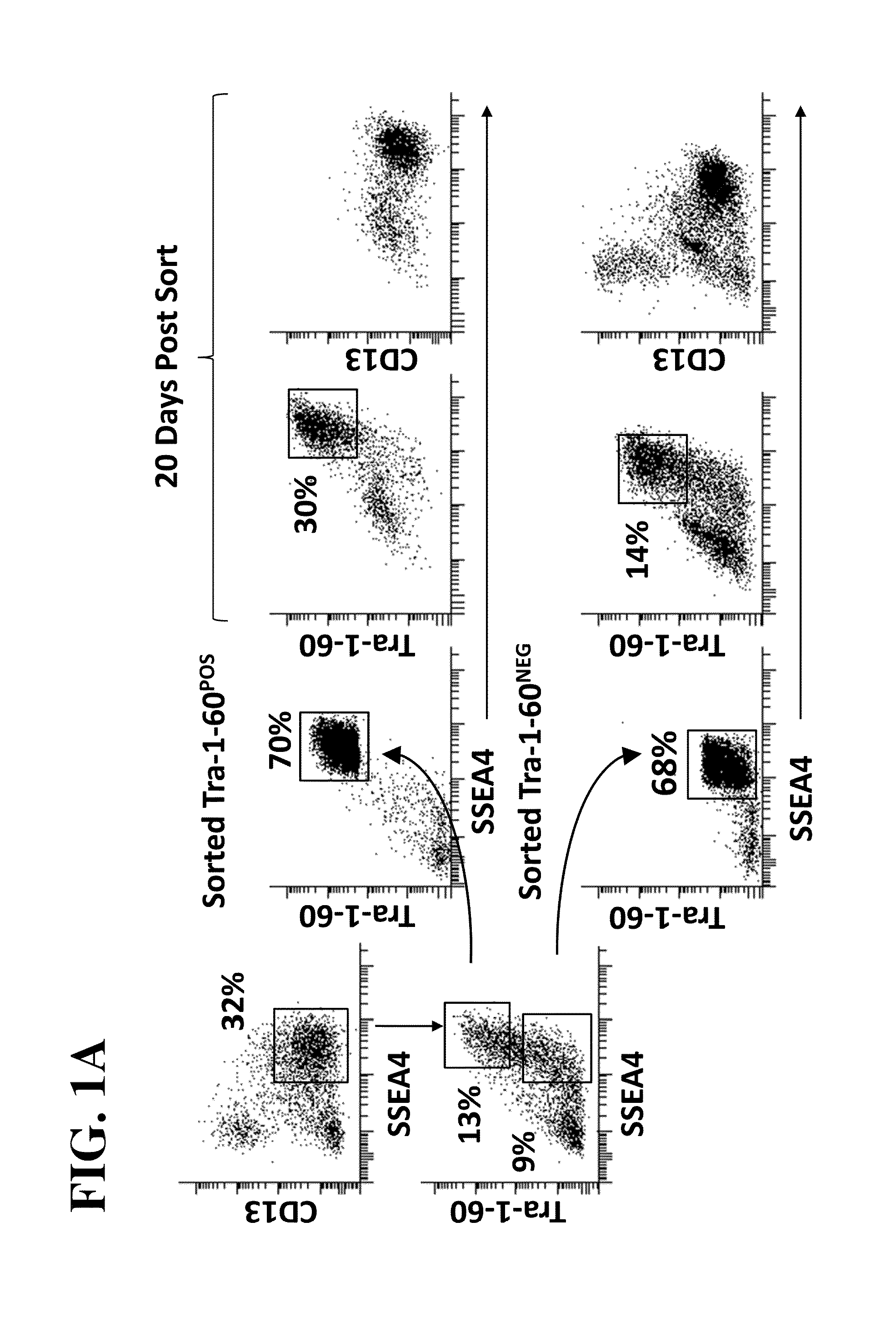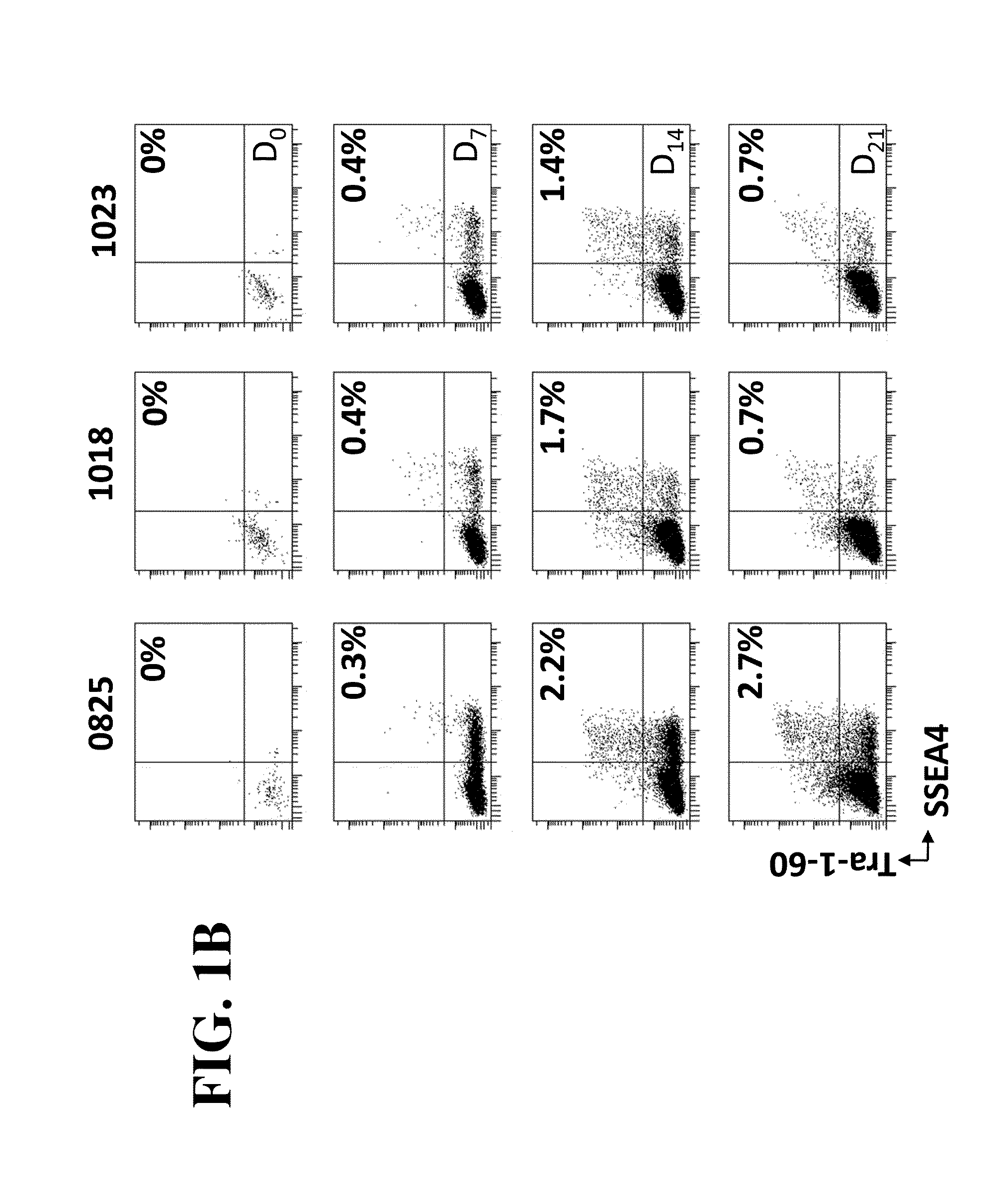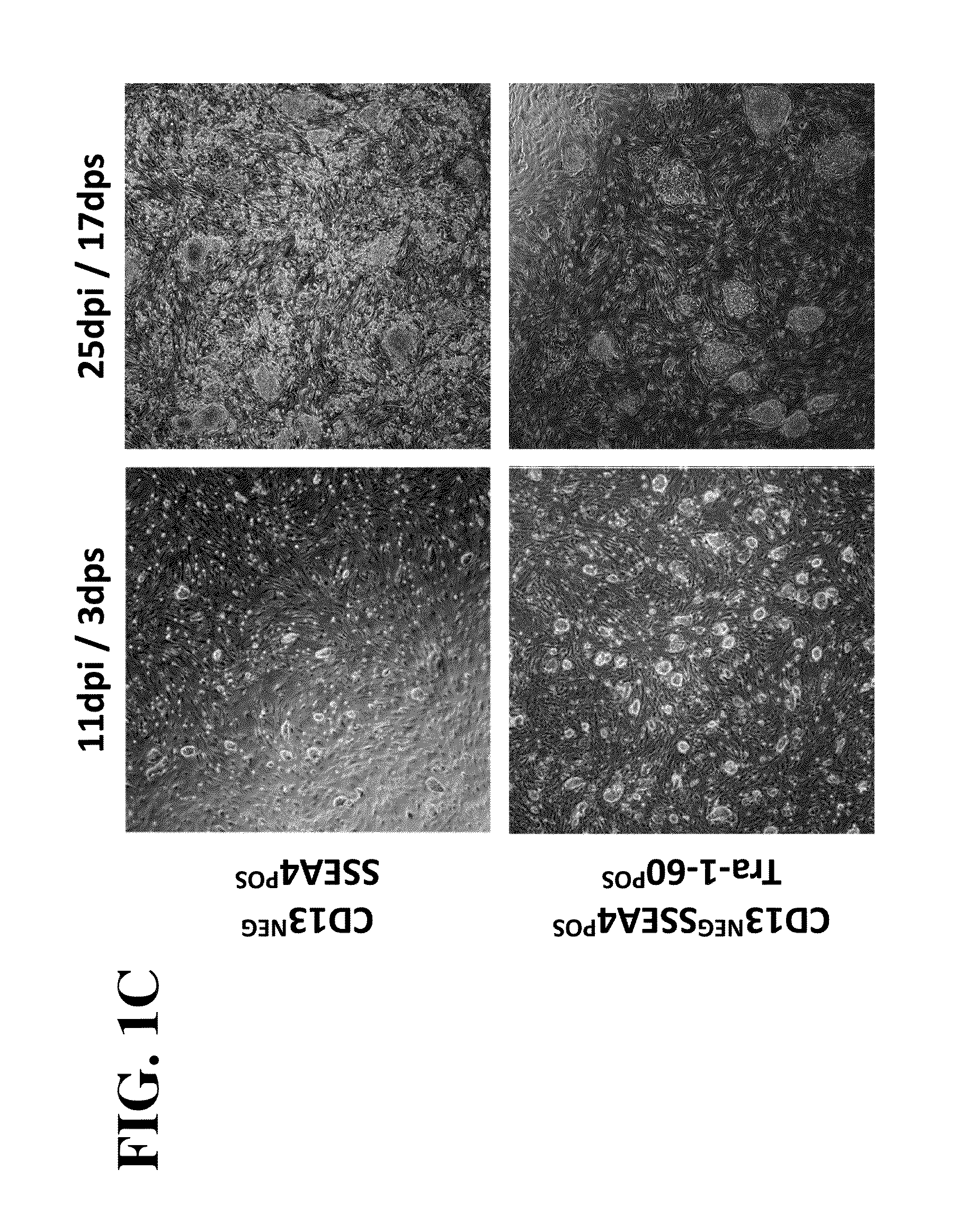Methods for producing induced pluripotent stem cells
a technology of stem cells and induced pluripotent stem cells, which is applied in the direction of genetically modified cells, instruments, skeletal/connective tissue cells, etc., can solve the problems of difficult control of the direction of differentiation of the stem cells, unresolved ethical concerns, and limit the availability of the stem cells for research and therapeutic applications, and achieve high throughput derivation and confirm the ability of the stem cells
- Summary
- Abstract
- Description
- Claims
- Application Information
AI Technical Summary
Benefits of technology
Problems solved by technology
Method used
Image
Examples
example 1
Rapid Production of iPS Cells and Colonies
[0068]A. Cell Lines
[0069]The 0819 and 0825 fibroblast lines were derived from discarded foreskin tissue provided from a cell bank under a notice of Investigational Review Board (IRB) exemption. The 1018 fibroblast line was derived from an upper aim skin biopsy taken from a 32yo F with Type I Diabetes age of onset 10. The 1023 fibroblast line was derived from an upper arm skin biopsy (described below) taken from a 23yo M and is considered a healthy control. Fibroblasts derived from Alzheimer's Disease (AD) patients were obtained through Coriell Institute for Medical Research Cell Repository (website is located at CCR dot CORIELL dot ORG). Live cell cultures of all parent fibroblast and reprogrammed lines were sent to Cell Line Genetics (website is located at WWW dot CLGENETICS dot COM) for cytogenetic analysis by 20 G-banded metaphase cells to determine Karyotype and DNA fingerprinting by STR analysis using the Powerplex® 16 kit from Promega....
PUM
| Property | Measurement | Unit |
|---|---|---|
| time | aaaaa | aaaaa |
| volume | aaaaa | aaaaa |
| volume | aaaaa | aaaaa |
Abstract
Description
Claims
Application Information
 Login to View More
Login to View More - R&D
- Intellectual Property
- Life Sciences
- Materials
- Tech Scout
- Unparalleled Data Quality
- Higher Quality Content
- 60% Fewer Hallucinations
Browse by: Latest US Patents, China's latest patents, Technical Efficacy Thesaurus, Application Domain, Technology Topic, Popular Technical Reports.
© 2025 PatSnap. All rights reserved.Legal|Privacy policy|Modern Slavery Act Transparency Statement|Sitemap|About US| Contact US: help@patsnap.com



